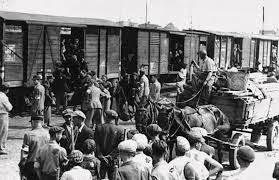Today I'm off to the Kennedy for a candle-light concert.
It's gotten colder about 35 F. Decorations are up and it’s feeling
like Christmas time.
But yesterday, I put on my marching shoes. I joined several
thousands walking from the White House down Pennsylvania
Avenue
I’m part of the Justice for All March and Rally protesting the killing of black sons and the impunity of police.
I’m part of the Justice for All March and Rally protesting the killing of black sons and the impunity of police.
This kind of marched is being echoed in cities across the country.
I think it’s the civil rights issue of the new millennium. If
you ask me, it's long overdue.
We walk together chanting:
"Hands up. Don't Shoot"
"We can’t breathe”
“Stop the Killing.” “No Peace without Justice.”
Signs amplify the anguish and a hope for a better
future. Many announce “Black Lives Matter.” A mother tells
her fear, “Don’t shoot…my son has a future.” I think, how sad that in
2014 we still need to say such things.
But then again, after weeks of protest, the killings have barely
penetrated American consciousness. Several signs are telling,
“White Silence = Equals White Consent.”
I’m struck by a young boy’s hand-made sign saying simply – “Am I next?”
I’m struck by a young boy’s hand-made sign saying simply – “Am I next?”
As I try to absorb the experience, it feels unlike other
marches. Missing is a chaotic carnival feel that's been prevalent in
other marches I've attended. And there's no hint of violence.
Instead families are serious, intent. They stand stoically almost prayerfully. In fact, when an invocation is offered, silence spreads across the crowd. Heads are bowed and strangers hold hands - one with another.
"Hear us, O Lord."
Instead families are serious, intent. They stand stoically almost prayerfully. In fact, when an invocation is offered, silence spreads across the crowd. Heads are bowed and strangers hold hands - one with another.
"Hear us, O Lord."
It seems to me that this atmosphere is under girded by hope that life can be better. Of course it's mixed with fears and anguish
that have lasted too long. "O God, how long...how long."
A radio commentary gives context. Lethal violence has been the American
experience used against black people during slavery and ever since the
Reconstruction Era - Especially against black men who were often lynched with
the help or at least the complacency of law enforcement.
A speaker at the rally polls the crowd , “Raise your hand if
you’re a black man who has felt fearful when pulled over by the police.”
Nearly ever hand goes up for as far as I can see. Then he asks the same
of white men and hardly a hand is raised. I’m not surprised and
isn't that the real pity.
On the platform, the families of those unarmed black men killed by
police are introduced. They form a “wall of shame” and surprisingly to me
are many more than I thought. Naming 76 men and women unarmed, but killed
by police, the NAACP chronicles these lost lives. Read
about them and click here.
I walk around taking a few pictures. I get to talking with a
father with his young toddler. I tell him about my grandson. Our kids are two months apart. He beams about his son. We take a selfie.
As we depart I say, “thanks for being
here.” And he says, No, no , thank you for being here.” I guess his
emphasis is because of my whiteness which is not as well represented as you
might wish.
Though for me, it's a privilege to be here. I say to him,
“it’s a little thing considering….I just wanted to use my feet to help a little.”
As the Rally winds down, I sit on a bench and watch families pass
by. Some of us exchange smiles. It feels good to be among people
who want to make this world a better place for all.
Strangely, I get to thinking, “it’s
feeling a lot like Christmas.”
Because after you scrape away the seasonal glitter and the abundance under the tree, what remains?
Slowly, a smile tweaks across my face. It’s gotta be the practice of loving one another and walking for justice in this world.
Because after you scrape away the seasonal glitter and the abundance under the tree, what remains?
Slowly, a smile tweaks across my face. It’s gotta be the practice of loving one another and walking for justice in this world.
I think to myself, "God help us. And of course, God is...."

















